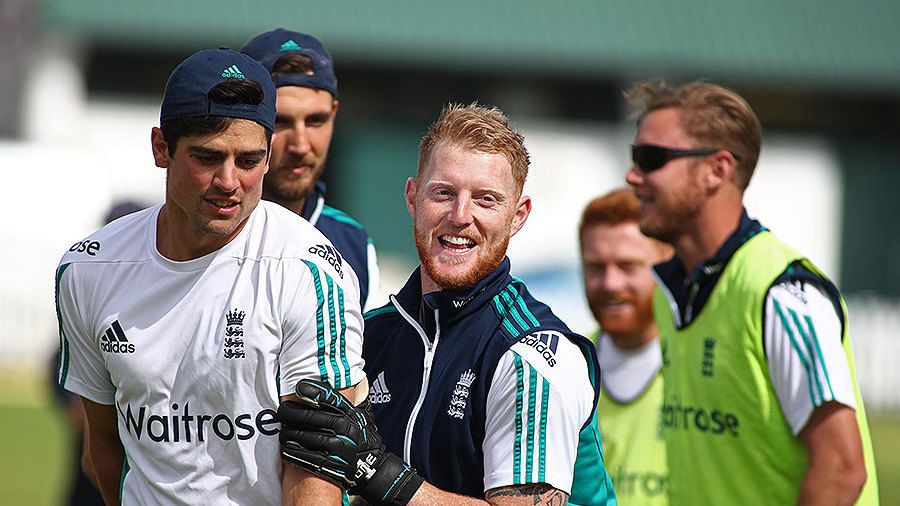Black Caps v South Africa
-
-
It's weird.. People talk about blooding new players..
And then we get Ronchi.. He's 36 in a couple of months..
Perfect chance for Glenn Phillips.. I prefer him because he opens the batting as well..I'd rather have Taylor over Munro
-
I agree with Hydro and, to a large extent, I agree with Mimic.
I don't take T20 that seriously, but I do quite like that we are number one at it.
I tend to think that Taylor would be better than Munro and that Ronchi's time is nearly up.
But, the only reason that there is much controversy over these selections for hit and giggle is that there's big bucks at stake for the players. Otherwise I'd be inclined to say that people like Taylor, Williamson and Boult shouldn't be risked in these.
-
I view T20 as the format that can help save cricket. Much as filthy boarders helped ensure the financial viability of a number of snowfields. If anything, it will likely substitute the 50 over version. So until that happens, it probably makes sense to blood players in the shorter version.
Tests will likely benefit from innovations like day/night.
-
@antipodean On the relevance of Test cricket, I really like several of these, especially the removal of the toss.
February 15, 2017 Five proposals to improve Test cricket
ROB STEEN We now have a championship in the offing. What else can the game do to better the five-dayer?
The decline in the number of instances of teams enforcing the follow-on means fewer chances of a repeat of the likes of a Headingley 1981 © PA Photos
As sporting dinosaurs go, Test cricket is the diplodocus - incredibly long-necked but with no right to have existed for even half as long as it has. A sporting competition that stops for lunch, tea, rain and bees, not to mention one that, in an age of haste and shortening attention spans, offers every chance of remaining unresolved after 30 hours spanning five days? Yet here we are, fast approaching its 140th birthday, and by some minor miracle the old bugger's still standing - and arguably in finer fettle than ever.
Time to take stock and, in the first instance, count blessings. Test matches are not simply surviving, but by another tiny miracle, actually proliferating. Sure, it's anyone's guess how long this will persist in the bravish new world of a nine-team world championship and a dozen Test combatants, wherein series would need only extend to a single contest (award a bonus point for each match hosted and let's see how that goes). It certainly seems likely that we will see more sides follow the women's lead and adopt the Super Series cross-format format England and Pakistan embraced so lustily last year. Come what may, the prospect of Bangladesh playing more regularly is justification enough.
There are plenty more reasons to be cheerful, or at least relieved. Day-night Tests are with us, likewise unanimity on DRS (and even, from October, standardisation of technology). Scoring rates can be radically, sometimes intoxicatingly, high, yet massive batting collapses are on the rise, bowlers still refuse to be cowed, and batsmen still have the patience to see out 20 successive maidens; the range of shots and deliveries, developed and honed in the shorter formats, has never been wider; stalemates are becoming ever scarcer; racking up 595 in the first innings of a match, as Bangladesh did last month, is no insurance against defeat; nor, thankfully, is winning the toss; Bangladesh have finally played their first Test in India, and made their hosts work harder than England managed for most of their hapless tour; Afghanistan and Ireland, glory be, are on the brink of joining the gang.
No one can doubt that Test cricket remains an endangered species, as it has been for so long, but the outlook is more encouraging than it has been for quite some time. Nevertheless, and with all due modesty, this column has a few proposals for the ICC and the MCC cricket committees to chew over and, in all probability, spit out.
Follow-on RIP?
It was all the rage a decade ago, but have you ever noticed how rarely one sees the word "burnout" uttered or written these days? Even though there are ever more players retiring from one format to focus on another (usually shorter and better-paid), let alone that T20 leagues and internationals have been piled on to already unprecedented schedules. Can we really be surprised, given that he plays for six teams in a single year, that Andre Russell kept forgetting to inform drug-testers of his whereabouts? Given England's loss of eight wickets for as many runs in a T20 international, maybe the word should be "brain fade".Perhaps we need merely raise the bar: make 250 runs or even 300 the minimum deficit, thus ending this daft charade and making it look ever more ludicrous not to enforce the follow-on
All of which raises one particular question: why, given its obvious potential to produce a free day or two, has the follow-on become a barely less popular strategy than packing the leg side and instructing one's attack to aim at the ribcage and/or skull? Two theories are invariably trotted out: one, chief executives want matches to last the full five days to maximise revenue while pleasing the broadcasters, and hence put pressure - however subtle, however insidious or subconscious - on the captains. Two, to a generation weaned on Kolkata 2001 if not Headingley 1981, asking the opposition to bat again is too fringed with risk to be a decision unblinkingly or even occasionally taken. What, then, is the point of the follow-on? Has it not passed its sell-by date?Some have suggested that we go the other way entirely and make it mandatory, which seems, on the surface, to be a splendid idea. However, as Nasser Hussain pointed out in the Cricketer recently, it is easy to see how that could descend into farce. Imagine England are 150 for 8, needing 23 to avoid the follow-on, but Steve Smith has no intention of enforcing it; imagine the sudden stream of full-tosses and half-volleys that might ensue.
Maybe we should incentivise. Once the World Championship is finally up and running, bonus points for innings wins could certainly focus minds and sharpen appetites. Or perhaps we need merely raise the bar: make 250 runs or even 300 the minimum deficit, thus ending this daft charade and making it look ever more ludicrous not to enforce the follow-on, and thence, hope-against-hopefully, shame the naysayers into upping their game?
Toss the toss
It's hard not to ask a similar question of the game's most venerable and least loveable custom, especially when it comes to the longest format. County cricket has already gone down that road to an extent, giving the visiting side the option of batting or bowling in a laudable effort to curb the number of home-baked pitches. Test tracks, of course, are subject to far more scrutiny and far higher standards are required to remove any whiff of bias, and - by happy convenience - prolong contests. Whichever way you look at it, England's recent innards-twisting experiences in India - eight tosses won out of 11 across all formats but every series lost - are surely enough to prove that guessing correctly is not the sort of talent the game need nurture any longer, much less a ritual worth preserving. So keep it simple: let the visitors choose what to do and banish "heads" and "tails" from the game's lexicon.How about tinkering with the width of the stumps to bring bowlers into the game a little more? © Getty Images
A bigger target
The bowlers may be just about holding their own but they're more than overdue a law change in their favour. On its way may well be legislation on bats (which have yet, mercifully, to scale the heights - or plumb the depths - of the 4lb 2oz monster William Ward wielded when he made 278, the first recorded double-century, for MCC v Norfolk in 1820), but why not go in a different direction? On the basis that it would be harder to inside-edge for six, we could just as easily request that the ball be shrunk for the first time since 1927, when its circumference was reduced from a maximum of nine and a quarter inches to nine (and, for the record, a minimum of eight and 13/16ths). And what about encouraging Kookaburra and company to make the seam prouder? That might swing the pendulum too far the other way. Enlarging the target would be better.Heightening or thickening the stumps - or even adding a fourth - might be just the ticket. The last time the target was altered, after all, was way back in 1931, when the height of the wicket rose from 27 inches to 28 and the breadth from eight inches to nine, though the latter was optional until 1947. MCC considered expansion in 1962, even going so far as to stage a match with a fourth stump, but nothing came of it. Given how bats have grown, surely it's time to balance the books.
The devil in drag
So often are no-balls missed these days, there has been much talk lately of a revision to the law that would both allow the umpire to detect them more easily and reduce the strain on the faster bowlers (surely something electronic can be done about the former). Unfortunately, advocates of such a seemingly welcome measure would have us return to the rotten old days of the late 1950s, when the back-foot law prevailed, enabling bowlers to drag and thus reduce the distance between them and the batsman at delivery. Gordon Rorke, a towering Australian quick, became a feared drag act during the 1958-59 Ashes series, but modern bowlers are, if not bigger in foot or longer of toe, then generally longer of leg, so common sense dictates that any reversion should be resisted. To put it bluntly, reducing the batsman's reaction time can only increase the risk of another Phil Hughes.Open the gates
Free admission for school parties, under-21s, anyone who arrives after tea or supper, and anyone wearing fancy dress or holding a banner reading "Test cricket is better than sex." Anything that introduces minds and bums to the greatest of all trivial pursuits. -
Number one thing I'd change would be bat width. There's no way a top edge should go for 6, but any uppish thick edge now sails into the stands, its gotten ridiculous. An edge is a win for the bowler, not a superb shot that is undefendable. Every ODI or T20 I've watched in the last few years has maybe 10 6's that with Viv Richards bat were regulation caught behinds. Add depth, add a bigger sweet spot - those reward good timing, massive think edges reward you knicking it.
-
How rubbish international T20 is currently will be perfectly illustrated tomorrow night when Aus host Sri Lanka. Sure, half the first choice Aussie team is in India preparing for the first test next week, but lets play a fucking 3-mach T20 series against someone who is in the country for no other reason.
And because Sri Lanka are pretty fucking rubbish at the moment, they'll probably get humped by Ben Dunk and a bunch of other blokes not really good enough.
-
@Virgil far be it for me to defend anything Indian cricket, but according to Cricinfo, they are on the road as much as anyone. Most countries over the past couple of years have a split of tests home/away of around 50%. Except us, who play away far more often.
India just don't play as many tests as everyone else, in fact over the past couple of years, they have only played as many as we have.
It just seems they are on a bit of a home streak at the moment. I assume during the year they will be off on tour again.
-
Nineteen NZ players up for IPL auction on 20 Feb. According to my rough conversions of base price...
~NZ$300K
Boult~NZ$200K
Anderson
Elliott~NZ$100K
Guptill
Taylor
Henry
Munro
Neesham
Santner
Ferguson~NZ$60K
Sodhi
Broom
Bruce
Devcich
de Grandhomme
Ryder
Wheeler
N. McCullum~NZ$20K
PhillipsI think there's only 29 international player spots available across the franchises and 319 players on the block (though quite a few Indians) so most of our guys are likely to miss out. ESPN articles are talking up the chances of Anderson, Munro, de Grandhomme and Boult. Lots of teams looking for all rounders apparently.
Philips will be cursing the weather, which might deprive him a chance to play a blinding innings.
-
@Chris-B. said in Black Caps v South Africa:
Nineteen NZ players up for IPL auction on 20 Feb. According to my rough conversions of base price...
~NZ$300K
Boult~NZ$200K
Anderson
Elliott~NZ$100K
Guptill
Taylor
Henry
Munro
Neesham
Santner
Ferguson~NZ$60K
Sodhi
Broom
Bruce
Devcich
de Grandhomme
Ryder
Wheeler
N. McCullum~NZ$20K
PhillipsVirgil $178.00
I think there's only 29 international player spots available across the franchises and 319 players on the block (though quite a few Indians) so most of our guys are likely to miss out. ESPN articles are talking up the chances of Anderson, Munro, de Grandhomme and Boult. Lots of teams looking for all rounders apparently.
Philips will be cursing the weather, which might deprive him a chance to play a blinding innings.
-
Some Aussies are on unreal money.
Watson still gets $1.85M for his 6 weeks work. Faulkner gets $1.45, which is more than both Smith and Warner on about $1.1 each.
-
@mariner4life said in Black Caps v South Africa:
Some Aussies are on unreal money.
Watson still gets $1.85M for his 6 weeks work. Faulkner gets $1.45, which is more than both Smith and Warner on about $1.1 each.
http://www.totalsportek.com/money/richest-cricketers/
Wee Davy's doing alright though. Not as good as Kohli and Dhoni, but better than the other Aussies.
And just to really make your day....
-
@mariner4life said in Black Caps v South Africa:
Some Aussies are on unreal money.
Watson still gets $1.85M for his 6 weeks work. Faulkner gets $1.45, which is more than both Smith and Warner on about $1.1 each.
Christ as if I didn't dislike Watto enough.....
-
That article about improving test cricket seem bizarre to me. Especially the bit about the toss. They firstly suggest that we should get rid of the toss to prevent home baked pitches. Then to back up their point they point out that England won a lot of tosses in India and lost heaps. I think that just proves their point is wrong.

 IPL player auction - What to expect in 2017?
IPL player auction - What to expect in 2017?
